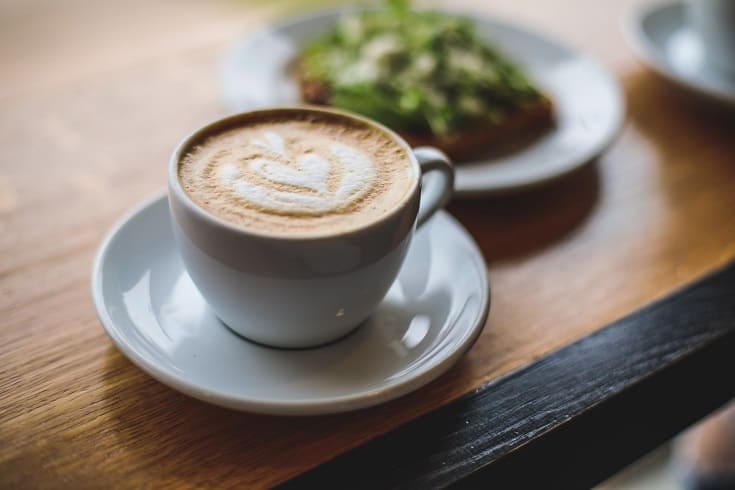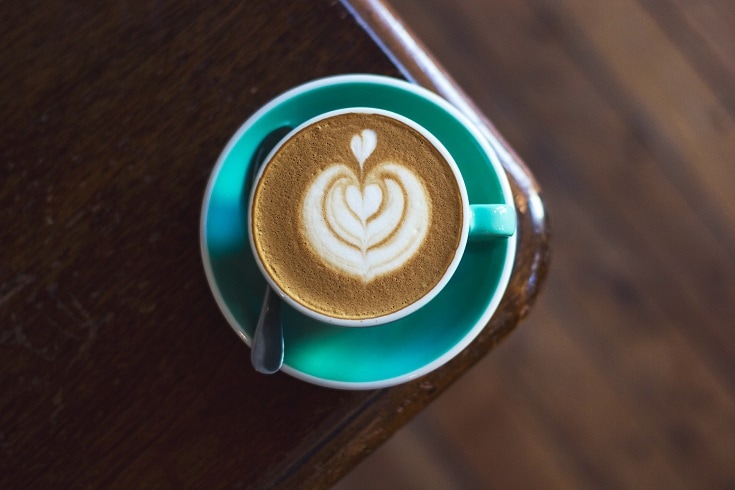
Espresso drinks can be confusing to the uninitiated. Almost all espresso-based drinks on the local coffee shop menu contain identical ingredients: espresso, milk, and milk foam. When you choose between a cappuccino, latte, flat white, or any other common café offering, what you’re deciding is how much of each ingredient you want. Lattes contain more milk than cappuccinos, which in turn have more milk than a macchiato.
To make things more confusing, many drinks also have different versions that fill in the spaces between distinct beverages. A wet cappuccino is one of these in-between drinks that bridge the gap between the classic cappuccino and the traditional latte. In this article, we’ll break down the difference between a wet cappuccino and a regular cappuccino and talk about how to tell if a wet cappuccino is right for you.

Wet Cappuccinos: It’s All About the Milk
When you order a cappuccino at a coffee shop, you know, broadly speaking, what to expect. In general, a cappuccino is one-third espresso and two-thirds milk. For a single shot, that means a cappuccino has about one ounce of espresso and two ounces of milk. The milk component of a cappuccino is further divided between liquid milk and frothed milk foam. A standard cappuccino uses roughly equal parts of milk foam and regular milk.
When we start talking about wet cappuccinos, things start to get a little murky. The definition of a wet cappuccino is a cappuccino that uses more milk and less milk foam than usual. That isn’t a very precise definition, but it does convey important information.
If you want a more specific answer, most coffee shops tend to use the same amount of milk in a wet cappuccino that they would in a regular cappuccino, but they divide it so that only 25% is milk foam and 75% is milk instead of the usual 50-50 split.

Wet cappuccinos are somewhere between cappuccinos and lattes on the espresso drink scale. At this point, you might be wondering at what point does a cappuccino become a latte? That is a good question and, unfortunately, there isn’t a clear answer. This is a good time to point out that coffee isn’t a science, and named coffee drinks are inherently misleading. While it is convenient to have names for standard drinks, there isn’t anything fundamentally different between a latte and a cappuccino other than the amount of milk used in each.
What About Dry Cappuccinos?
You might also be wondering if there is a dry cappuccino after all this talk about wet cappuccinos and, yes, there is! A dry cappuccino is the opposite of a wet cappuccino; it is a cappuccino that favors milk foam over regular milk. Just like how wet cappuccinos use the same overall amount of milk but break it down into 25% milk foam and 75% regular milk, dry cappuccinos use approximately 75% milk foam and 25% milk.
It’s important to remember that both wet and dry cappuccinos are one-third espresso and two-thirds milk; it’s the amount of milk foam compared to the amount of regular milk that distinguishes them.

When to Order a Wet Cappuccino
If you find cappuccinos too strong for your taste but lattes too milky, a wet cappuccino is worth trying. Even though a wet cappuccino uses the same amount of milk as a regular cappuccino, the greater amount of liquid milk dilutes the coffee more and creates a mellower, smoother experience.
On the other hand, if you like strong espresso drinks and order cappuccinos for the bold coffee-centric taste, you probably won’t like the wet version. Instead, you might prefer a dry cappuccino. Dry cappuccinos are less common than wet cappuccinos because they’re a bit odd to drink. The huge layer of foam makes it hard to get any coffee on your first sip and often feels a bit like taking a bite of whipped cream. Once you get through the foam, the coffee is stronger and more akin to a macchiato than a cappuccino.

Conclusion
Cappuccinos are one of our favorite espresso drinks because of their velvety texture and strong coffee taste. If that isn’t your kind of coffee, you might prefer a wet cappuccino, which is more like a latte without being quite as milk-focused. Wet cappuccinos are a middle ground of sorts between lattes and cappuccinos and are perfect for people who want a little more milk flavor in their cappuccino without overpowering the coffee entirely.
Dry cappuccinos are a real option but far less common than the regular or wet varieties. If you like strong coffee or milk foam, you’ll probably love a dry cappuccino, but most people would probably be better served by ordering a completely different drink. Still, it can be fun to experiment and explore the full spectrum of espresso and get a sense of the immense variety available.
RELATED READS:
- Does a Cappuccino Have Caffeine?
- How to Make a Flat White Coffee (Simple Steps)
- Espresso vs Cappuccino: What’s the Difference?
Featured Image Credit: Scott Warman, Unsplash















